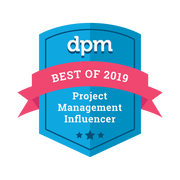Top mistakes
Some of the classic mistakes that project managers make is that they include too much static information and not enough about what the real project issues are. In that way the report is not a true reflection of what is really going on. If you just write about what happened during the last reporting period and what you will do during the next reporting period, without mentioning how that compares to plan and what the real risks and issues are, there is no incentive for executives to pay attention to it. In many cases the report is even attached in an email without any context or description, meaning that executives who rely on smartphones are unlikely to ever get to the information.
The perfect progress report
So, what does a perfect status report look like? Well, first and foremost it’s a simple report, preferably on one page, which adds real value by providing an overview of milestones, risks, issues and budgetary information at a minimum. Here are some guiding dos and don’ts:
- Don’t include too much static information about the background of the project.
- Do include the name of the sponsor and the project manager.
- Do keep the information to one page.
- Do include the top 5 risks and issues, including owner and mitigating action.
- Do include information about the budget and how you are tracking to it.
- Do include an overview of the major milestones, their planned dates and a RAG status of each.
- Do list key successes and achievements from last period.
- Do list any earned value metrics you may have, but keep it simple and graphical.
- Do make it clear what action you want people to take; is this report just for information or do you require a decision from anyone?
- Don’t send out the report via email without providing any context in the body of the mail. Executives may never read the report, so provide a summary in the email itself.
- Don’t send out bad news in a project report with out speaking to people first. You don’t want your sponsor to read about a major issue without being there to explain the situation.
Download a free template
To see an example of a perfect progress report, log on to my resources page and download a free copy. If you have any suggestions to improvements, please add a note to this post.
If you liked this post, you may also like:
8 Tips for Managing Project Costs
10 guidelines for estimating project effort
Risk management is how adults manage projects!
Are you making any of these 10 project management mistakes?
What makes a perfect Project Initiation Document (PID)?









 RSS Feed
RSS Feed